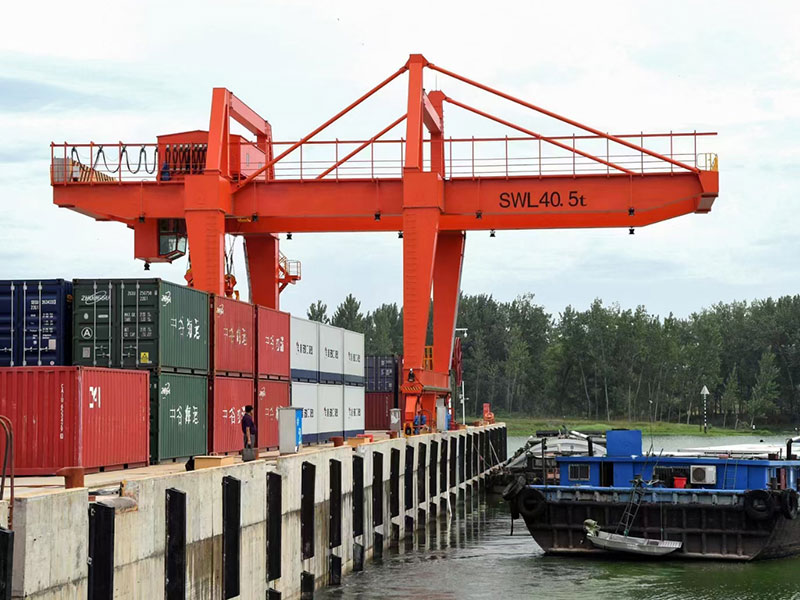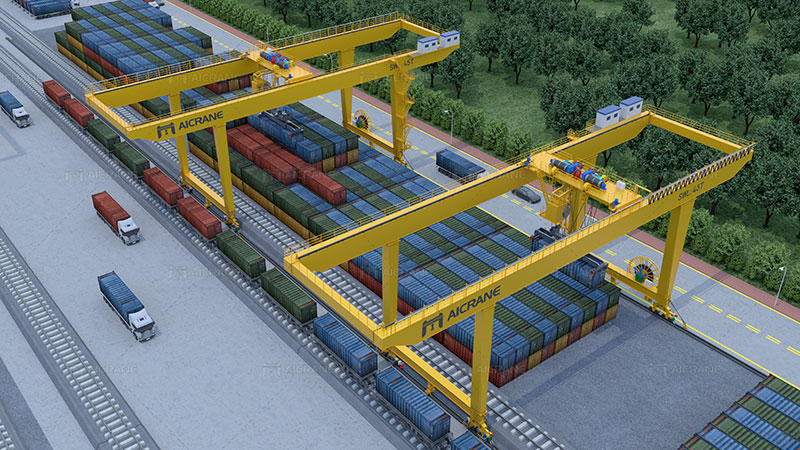Operating a gantry crane at a port is a complex task that requires precision, skill, and a deep understanding of the equipment and environment. Gantry cranes are essential for handling the loading and unloading of containers from ships, and their operation is critical to the efficiency and safety of port operations. This passage will outline the steps and best practices for operating a gantry crane at port, including pre-operation checks, operational procedures, and safety considerations.

Pre-Operation Checks
Before operating a gantry crane at port, it’s crucial to conduct thorough pre-operation checks. These checks ensure the crane is in good working condition and ready for use. The operator should:
Inspect the Crane: Perform a visual inspection of the gantry crane, looking for any signs of damage or wear and tear. Check the structural integrity of the crane, including the main beams, cables, pulleys, and hooks.
Check the Controls: Test all control systems to ensure they are functioning correctly. This includes the joystick, buttons, and emergency stop functions.
Verify Load Limits: Confirm the crane’s load capacity and ensure it matches the weight of the containers to be handled. Overloading the crane can lead to accidents and equipment failure.
Review Safety Features: Ensure all safety features, such as limit switches, alarms, and lights, are operational. These features are vital for preventing accidents and ensuring the safety of the operator and other port personnel.
Examine Power Supply: Check the power supply to the crane, whether it is electric, diesel, or hybrid. Ensure there are no issues with the power source that could interrupt operations.
Operational Procedures
Operating a gantry crane at port involves several key procedures that must be followed meticulously. These procedures ensure the safe and efficient movement of containers:
Positioning the Crane: Align the gantry crane with the ship and the containers to be loaded or unloaded. Use the crane’s control system to move it into the correct position, ensuring it is stable and secure.
Engaging the Spreaders: The spreaders are the devices that attach to the top of the containers. Lower the spreaders onto the container, ensuring they lock securely into place. Verify the connection before lifting the container.
Lifting the Container: Gradually lift the container, monitoring the load and ensuring it is balanced. Avoid sudden movements that could cause the container to swing or become unstable.
Transporting the Container: Move the container to its designated location, whether it’s onto the dock, a truck, or a storage area. Use smooth, controlled movements to avoid collisions and ensure the safety of other port personnel.
Lowering the Container: Carefully lower the container into place, ensuring it is properly aligned with its destination. Release the spreaders once the container is securely positioned.
Repeating the Process: Continue the loading and unloading process, following the same steps for each container. Maintain a steady pace to ensure efficiency while prioritizing safety.

Safety Considerations
Safety is paramount when operating a gantry crane at port. Operators must adhere to strict safety protocols to prevent accidents and injuries:
Training and Certification: Only trained and certified operators should be allowed to operate gantry cranes. Proper training includes understanding the crane’s controls, safety features, and emergency procedures.
Communication: Maintain clear communication with other port personnel, including signalers and ground staff. Use radios or hand signals to coordinate movements and ensure everyone is aware of ongoing operations.
Emergency Procedures: Familiarize yourself with emergency procedures, such as how to stop the crane quickly, how to handle power failures, and how to respond to accidents. Regularly review and practice these procedures.
Load Monitoring: Continuously monitor the load during lifting and transport. Use load indicators and sensors to ensure the weight does not exceed the crane’s capacity. Be vigilant for any signs of instability or imbalance.
Environmental Conditions: Pay attention to weather conditions, as they can impact crane operations. High winds, rain, or poor visibility can make it unsafe to operate the crane. Suspend operations if conditions become hazardous.
Personal Protective Equipment (PPE): Wear appropriate PPE, including hard hats, safety glasses, gloves, and high-visibility clothing. Ensure all personnel in the vicinity of the crane are also wearing proper protective gear.
Operating a gantry crane at port is a task that demands careful attention to detail, adherence to safety protocols, and proficient handling of the equipment. By conducting thorough pre-operation checks, following meticulous operational procedures, and prioritizing safety at all times, operators can ensure the efficient and safe movement of containers. Proper training, clear communication, and vigilance are essential components of successful gantry crane operation, contributing to the overall productivity and safety of port operations.
Contact your gantry crane manufacturer to get more information.